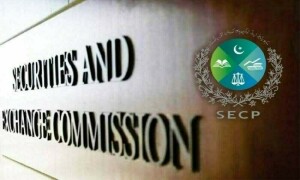ISLAMABAD: The combined impact of consistent implementation of fiscal-structural, labour market, trade, and State-owned Enterprise (SOE) reforms can increase growth by about 2 percent over a five year period while having a meaningfully positive impact on reducing inequality.
This was stated in the International Monetary Fund (IMF) paper “Pakistan selected issues”.
The paper uses simulations conducted using the IMF’s Debt, Investment, Growth and Natural Resources (DIGNAR) and Dynamic Investment Growth and Natural Disasters (DIGNAD) models to assess the potential impacts of such reforms.
Under a full reform scenario encompassing fiscal structural and market reforms, Pakistan’s output level is 7 percent higher after five years relative to the steady state, implying a crowding-in effect on private consumption and investment. Structural reforms would also reduce the public debt to GDP ratio by about 6 percent over the same time period.
The combined effect of the reforms could deliver a medium-term increase in real GDP growth of 2.13 percentage points relative to baseline.
Dividends from tax reforms and gains from public investment efficiency boost output growth by about 0.14 and 0.12 percent (6 and 7 percent of the total growth gain), respectively, by year five, while trade reforms contribute 0.16 percent (about 8 percent of the total growth gain).
The paper noted that due to inefficiencies in the tax collection system, a (potentially significant) fraction of taxes due may fail to reach the government’s revenue authority, compromising the improvement in the debt-to-GDP ratio. Pakistan’s tax revenue collection remains low compared to its level of development, with value-added tax (VAT) and Personal Income Tax (PIT) collection remaining below emerging market (EM) averages.
Pakistan has one of the lowest C-efficiency rates among EMs (where the VAT C-efficiency denotes the extent to which final consumption is taxed). In 2020, Pakistan’s VAT C-efficiency was 0.23, implying that the VAT captures less than a quarter of its potential tax base. Doubling its C-efficiency would nearly double VAT collections. PIT C-efficiency is also low (16 percent). The simulations assume that endpoints are doubled for both VAT and PIT C-efficiency, to the comparator group average, by 2028.
Structural reforms are found to increase growth potential by strengthening the government’s capacity to perform core functions and improve the business environment, which reflects better fiscal performance (by enhancing tax collection and public investment efficiency) and more efficient resource allocation (by reducing labour market distortions and improving SOE management). Simulations show that the real growth gain ranges from 0.8 to 2 percent each year, which contributes to a reduction of Pakistan’s debt and external vulnerabilities. Notably, these are static gains; gains to potential growth from structural reforms could be more substantial and permanent than implied by the model, especially if they open up new sectors and drivers of growth. These reforms can also improve income distribution in Pakistan.
The report also finds that ex-ante investment in climate-adaptive infrastructure can reduce negative growth impact of a natural disaster shock by one-third while ensuring a quicker and more complete recovery.
The paper noted that structural reforms are critically needed for Pakistan to create the fiscal space, build human capital, enable the private sector, and build the resilience needed to move to a sustainable and inclusive long-term growth path which is also more climate resilient.
Pakistan’s living standards have been declining for decades. This has been accompanied by weak human capital outcomes, low fiscal capacity, protection for favoured industries, and a large state footprint. The large SOE sector, which provides poor-quality services, makes large losses, and has absorbed almost 9 percent of GDP in direct budget support cumulatively since 2016, is another source of economic inefficiencies.
The consequences of these structural weaknesses have been exacerbated by increasingly high climate vulnerability. Pakistan’s climate faces a rate of warming significantly higher than the global. This will bring increasingly greater climate variability and extreme events, including reduced water availability, more severe and longer droughts, accelerated glacial melt, more variable and intense monsoons accompanied by floods and landslides, and sea-level rise encroaching on coastal settlements and infrastructure.
Climate and weather related disasters, which have increasingly been exacerbated by climate change, resulted in $29.3 billion in economic losses over 1992-2021, equivalent to 11.1 percent of 2020 GDP, which slowed developmental gains. More recently, the floods of 2022 killed 1,700 people, displaced 8 million, increased the poverty rate by up to 4 percentage points, and brought economic losses equivalent to 4.8 percent of fiscal year 2022 GDP, with reconstruction needs estimated at 1.6 times the budgeted national development expenditure of fiscal year 2023.
Copyright Business Recorder, 2024

























Comments
Comments are closed.